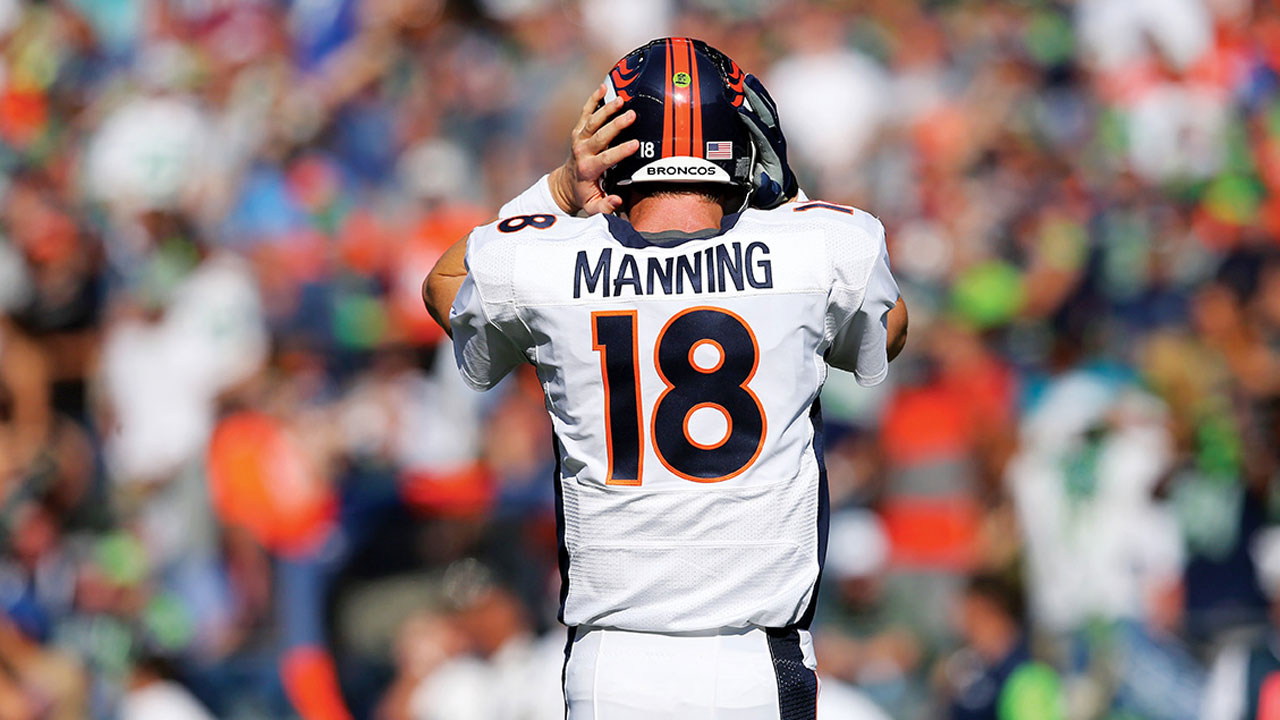A friend who is a Cleveland Browns fan swears that his child learned to count to 10 thusly: 0-1, 0-2, 0-3, 0-4, 0-5 … But here’s a secret: Not only were the Browns once a dynasty, they were four decades ahead in using radio communication between the sidelines and quarterback. In 1956, Ohio inventors George Sarles and John Campbell developed a radio receiver to fit inside the helmet of Browns quarterback George Ratterman. The system lasted for four games, before the Detroit Lions coaching staff noticed odd substitution patterns, sent somebody to snoop around the Browns sidelines and found a transmitter. Yikes. NFL commissioner Bert Bell was not amused, and it wasn’t until 1994 that the league allowed radio communication between the sidelines and the quarterback. It was 14 more years before communication was allowed with a designated defensive player.
WHY DO IT?
When the play clock was reduced from 45 to 40 seconds in 1993, coaches and general managers complained they were burning timeouts getting plays sent in.
In 1994, according to the NFL, between eight and 15 seconds were saved on play calls with the new system in place.
“It makes it a little more efficient, but my hypothesis is that was probably just a side effect of the new system,” says Michelle McKenna-Doyle, the NFL’s chief information officer. “It was simply meant to be a way to communicate in real time.” A positive unintended consequence, then.
HOW IT WORKS
Each offensive and defensive team is allowed one player on the field with a radio receiver in his helmet, allowing him to communicate with a coach on the sidelines, not in the coach’s booth. Each team is permitted to have three active radio receivers in helmets worn by quarterbacks—a QB who plays another position as well, say as a “wildcat,” must have two separate helmets—and a maximum of two for defensive players: one for a primary defender, the other for a designated backup player. The helmets are identified by a decal on the back.
The NFL has a game-day coordinator whose job is to make sure both teams are operating on their assigned frequency, and according to McKenna-Doyle, the league must coordinate frequencies before every game with one of the FCC’s local “Earth stations”; it needs FCC clearance for the power of the frequency being used at each game. The NFL uses digital radio—it switched from analog in 2012—and the league will likely move to voice over IP in the future, according to McKenna-Doyle.
YEAH, BUT …
How secure is the system, really? As secure as possible, on an open frequency. Communication is encrypted, and those stories about police signals or air-traffic signals being heard by QBs are urban myth, though a stadium located next to an airport or television station does present different issues.
“We’re in the process of moving to higher bands where there’s less consumer traffic,” says McKenna-Doyle. The NFL plans to use this year’s Pro Bowl to experiment with higher frequency and stronger encryption.
The rules are simple: Communication between coach and player is cut off automatically with 15 seconds left on the play clock by the game-day coordinator, and if one team’s system fails, the other team does not have to shut its system down. If you really want to know, there is an easy toggle switch that allows the coach communicating with the player to switch over to communication with the head coach or coordinator. And, yeah, the headphones are Bose noise-cancelling headphones. You would assume that weather or atmospheric conditions would be hardest on the equipment, but McKenna-Doyle says it’s the players and coaches themselves who do the most damage. “Our sidelines are hard on components,” she says with a laugh. Some more so than others.

